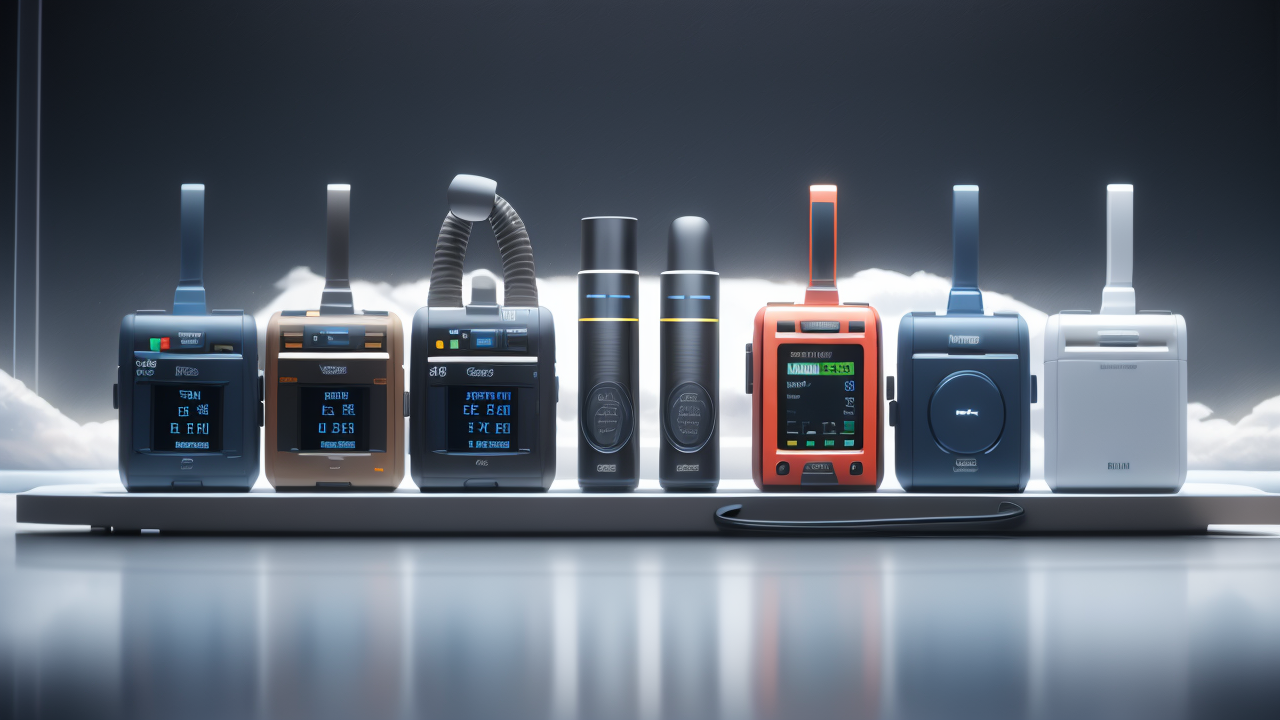Understanding the Basics: Comparing Walkie-Talkies and Two-Way Radios
The Technology Behind Walkie-Talkies
Walkie-talkies use radio waves to transmit voice over short distances. They operate on specific frequencies, usually in the UHF or VHF bands. These devices are compact and portable, making them ideal for outdoor activities.

Walkie-talkies have a push-to-talk button. This allows for instant communication without dialing. They typically have a range of a few miles in ideal conditions. However, obstacles like buildings can reduce this range.
Most walkie-talkies use analog signals. This means the audio quality may decrease with distance. Some modern models now use digital technology for clearer sound.
The Technology Behind Two-Way Radios
Two-way radios are similar to walkie-talkies but often more powerful. They can be handheld or vehicle-mounted. These devices use a wider range of frequencies, including HF, VHF, and UHF bands.
Two-way radios can transmit over longer distances than typical walkie-talkies. Some models can reach hundreds of miles with the right conditions and equipment. They often have more features, like multiple channels and privacy codes.
Many two-way radios use digital signals. This allows for clearer audio and better range. Some advanced models can even send text messages or GPS coordinates.
Key Features of Both Devices
Both walkie-talkies and two-way radios share some key features:
- Portability: Both are designed to be carried easily.
- Battery-powered: They can operate without external power sources.
- Push-to-talk: This allows for quick communication.
- Multiple channels: Users can switch frequencies to avoid interference.
- Weather resistance: Many models are built to withstand outdoor use.
However, two-way radios often have more advanced features:
- Longer range
- Better audio quality
- More channels and privacy codes
- Advanced signaling options
- Ability to integrate with other communication systems
Long Range Communication: Walkie-Talkies vs. Two-Way Radios
The Practicality of Using Walkie-Talkies at Long Distances
Walkie-talkies are not ideal for long-distance communication. Their range is typically limited to a few miles at best. In urban areas, this range can be even shorter due to interference from buildings and other obstacles.

For distances up to about 5 miles, walkie-talkies can be practical. They're great for camping trips, outdoor events, or workplace communication. However, for anything beyond that, their effectiveness decreases rapidly.
Some high-end walkie-talkies claim ranges of up to 35 miles. But these are often in perfect conditions, like from mountaintop to mountaintop. In real-world use, their range is much shorter.
The Practicality of Using Two-Way Radios for Long-Distance Communication
Two-way radios are much more practical for long-distance communication. Some models can reach distances of 100 miles or more. This makes them suitable for maritime use, aviation, and emergency services.
For personal use, two-way radios can cover large areas effectively. They're great for road trips, hiking in remote areas, or communicating across large properties. Their superior range and clarity make them more reliable over distance.
However, for very long distances (like 1000 miles), even powerful two-way radios have limitations. At these extreme ranges, other technologies like satellite phones become more practical.
Factors Affecting the Range of Your Communication Device
Several factors can affect the range of both walkie-talkies and two-way radios:
- Terrain: Hills, mountains, and buildings can block signals.
- Weather: Rain, fog, and atmospheric conditions can impact range.
- Power output: Higher wattage generally means longer range.
- Antenna: A good antenna can significantly improve range.
- Frequency: Lower frequencies often travel further.
- Height: Higher elevation usually results in better range.
- Interference: Other electronic devices can disrupt signals.
To maximize range, users should consider these factors. Choosing the right device and using it in optimal conditions can greatly improve performance.
Expert Recommendations and User Experiences in the United States
What Experts Say About Long-Range Communication Devices
Experts generally recommend two-way radios for long-range communication. They cite the superior range and features of these devices. For professional use, many suggest using VHF or UHF band radios.

For personal use, experts often recommend GMRS (General Mobile Radio Service) radios. These offer a good balance of range and ease of use. However, they require a license in the United States.
Experts caution against unrealistic range claims. They emphasize the importance of understanding real-world limitations. Many suggest testing devices in the specific environment where they'll be used.
User Experiences with Walkie-Talkies and Two-Way Radios
User experiences often align with expert opinions. Many users report disappointment with the range of consumer walkie-talkies. They find the advertised ranges to be unrealistic in practical use.
Two-way radio users generally report more satisfaction, especially for longer ranges. Outdoor enthusiasts praise their reliability in remote areas. However, some find the licensing requirements for GMRS radios to be a hassle.
Many users appreciate the simplicity of walkie-talkies for short-range use. They're popular for family camping trips and local events. For longer ranges, users tend to prefer more powerful two-way radios.
The Best Long-Range Communication Devices According to Consumer Reviews
Based on consumer reviews, some of the best long-range communication devices include:
- Midland GXT1000VP4: A popular GMRS radio with good range and features.
- Motorola T260TP: A reliable walkie-talkie for shorter ranges.
- BaoFeng UV-5R: A versatile two-way radio popular among hobbyists.
- Cobra ACXT1035R FLT: A waterproof GMRS radio with good range.
- Uniden SX377-2CKEM: A marine radio for long-range water communication.
Consumers value reliability, clear audio, and actual range in real-world conditions. Weather resistance and battery life are also important factors in reviews.
For truly long-range communication (1000 miles or more), consumers often turn to satellite phones or HF radios. However, these are specialized devices beyond the scope of typical walkie-talkies or consumer two-way radios.


